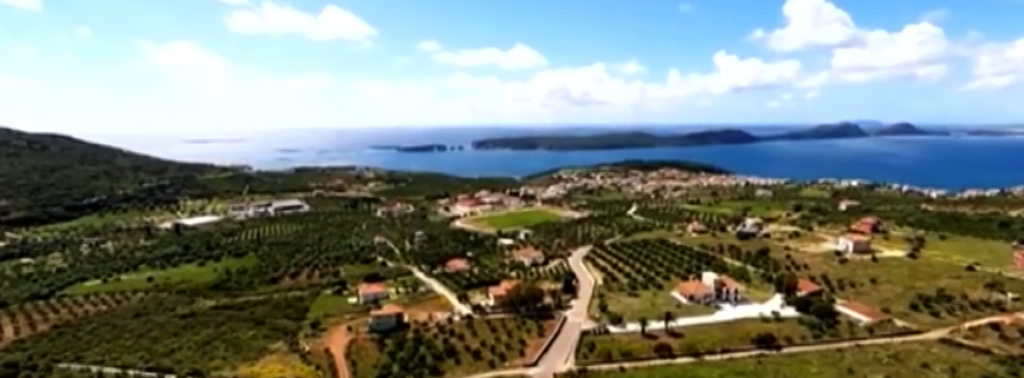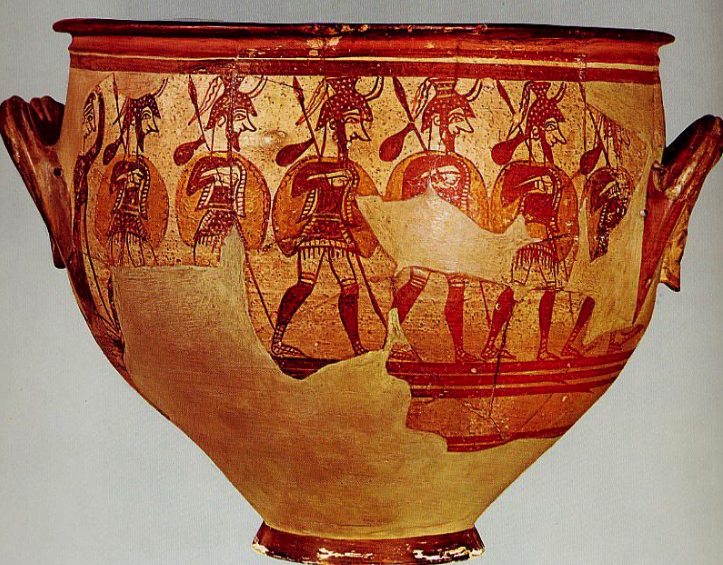They came to Pylos, Neleus’ strong-founded citadel, where the people on the shore of the sea were making sacrifice of bulls who were all black to the dark-haired Earthshaker. There were nine settlements of them, and in each five hundred holdings, and from each of these nine bulls were provided.(The Odyssey)
Pylos is a name out of time and legend, immortalized by Homer in the Iliad and the Odyssey, as was the name of Nestor, the son of Neleus and Agamemnon’s right-hand man and aged advisor during the war with Troy.
When you look at the archaeology of the Mycenaean Bronze Age in Greece, one inevitably thinks of places such as Mycenae, Tyrins, and yes, Pylos. These sites are well known.
There is, however, a misconception outside of the world of archaeology that everything has already been found.
This is far from the truth. Archaeologists are excavating new finds all the time, sometimes aided by drought and fire, other times by desperately-needed funding to back strong theories or even hunches about locations.
Pylos is no exception.
In the world of ancient Greece, one of the most exciting finds in the last few years is that of the Pylos Combat Agate and the discovery of the Griffin Warrior Tomb.
In today’s post, we’re going to take a look at the tomb and the array of magnificent finds that are challenging previous notions of the evolution of ancient Greek art.
First off, what exactly is at the site of Pylos?
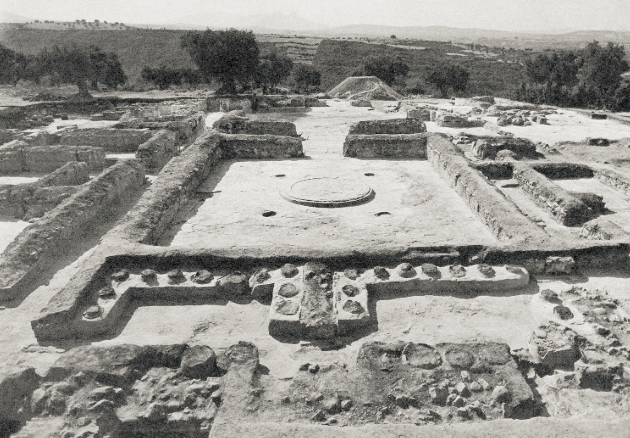
View of the megaron in the Palace of Nestor at Pylos, published by Carl Blegen in the AJA in 1956 before the first roof over the palace was built (image copyright held by the Department of Classics at the University of Cincinnati)
Pylos is located in the southwest of the Peloponnesian mainland of Greece. The palace there is the best-preserved Mycenaean palace yet discovered, said to be the power centre of King Nestor, whose ships joined the Greek army sailing for doomed Troy.
The palace of Pylos was located on a hill within the larger settlement that was, it is supposed, surrounded by an outer wall. It was made up of two storeys with various rooms, workshops, baths, reception rooms, and even a sewage system.
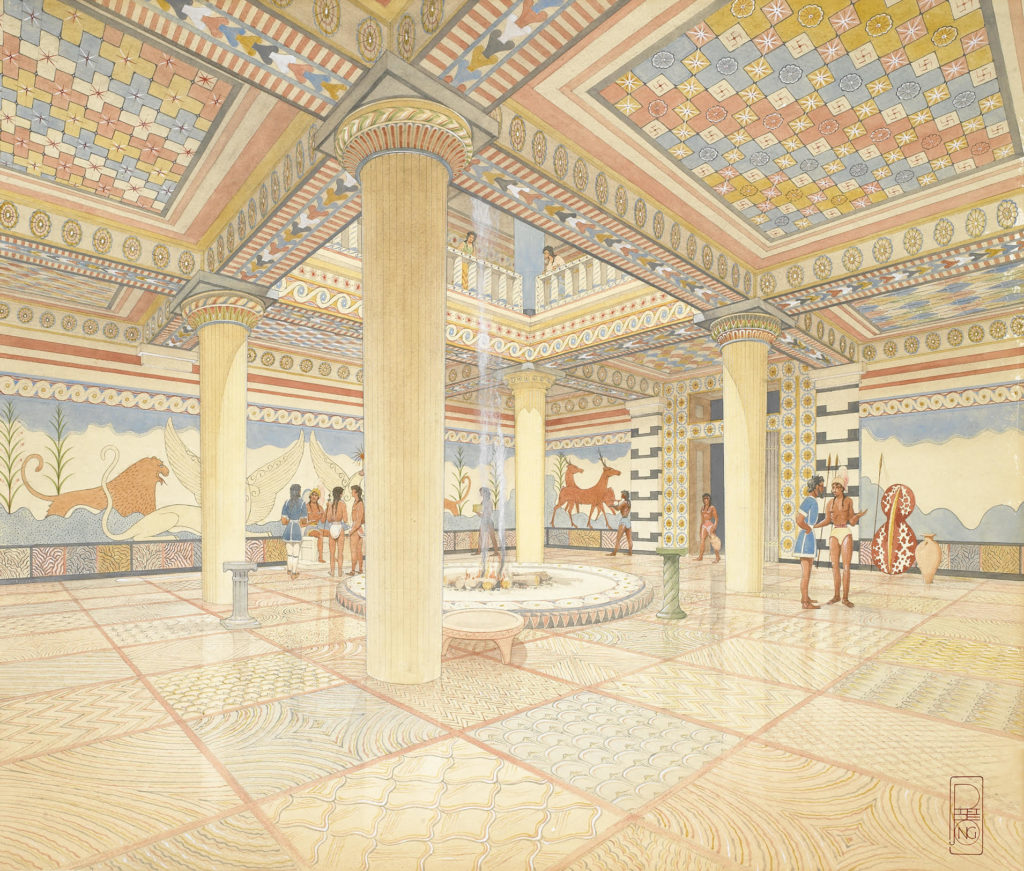
Watercolor reconstruction of the Throne room of Nestor’s Palace by artist, Piet de Jong (Image copyright by the Department of Classics at the University of Cincinnati)
Excavations at Pylos occurred in 1912 and 1926 when two tholos tombs were discovered in the area, but it was in 1939 that a proper, joint Greek-American excavation got underway. This was led by famed archaeologist Carl Blegen, from the University of Cincinnati. Blegen’s initial excavations of Pylos revealed walls, frescoes, Mycenaean pottery, and a royal archive of one thousand tablets.
World War II put the dig on hold for a while, but you can’t keep determined archaeologists down! In 1952, the palace was finally uncovered.
I’ve not been to this site personally yet, but it is definitely on my ‘to visit’ list! Here is a virtual tour of the palace at Pylos:
The University of Cincinnati has continued to excavate at Pylos since Blegen first became involved, more recently under the leadership of the archaeological husband-and-wife team of Jack L. Davis and Sharon Stocker who are responsible for the recent and fascinating discovery of what has become known as the ‘Griffin Warrior Tomb’.
What is the Griffin Warrior Tomb?
It is an undisturbed (and un-looted!) shaft tomb dating to about 1450 B.C. (before the Trojan War). It contained the intact remains of a long-haired adult male of thirty-something, of about 5 ½ feet tall, whose wooden coffin was located in the tomb along with over 3500 grave goods.
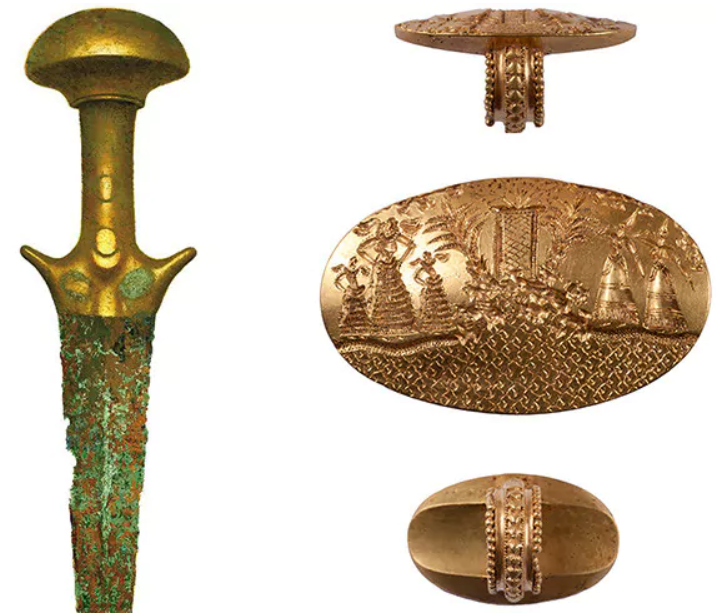
Sword and Ring from the Tomb (image copyright by the Department of Classics of the University of Cincinnati)
The grave finds included bronze weapons, armour, jewels and jewellery, mirrors, many items of silver and gold, signet rings, ivory combs, boar tusks (perhaps from a helmet), and more. It is interesting and important to note here that some of the goods are decorated with uniquely Minoan motifs.
There was also an ivory plaque between the warrior’s legs with a carved relief of a griffin. Presumably, this is where they came up with the name of this tomb.

Artist recreation of the Griffin Warrior Tomb as excavated (image copyright by the Department of Classics of the University of Cincinnati)
The tomb was located in an olive grove near the palace of Nestor, but within the Bronze Age city of Pylos.
We have no idea who this man was, but it seems likely that he was a warrior who was both rich and important. It is telling that he was buried not with many ceramic goods, which is common for warrior graves from the age, but rather with much gold and silver and finely wrought weapons. It is also thought that he could have been a priest of sorts due to the fact that many of the grave goods are ritual objects.
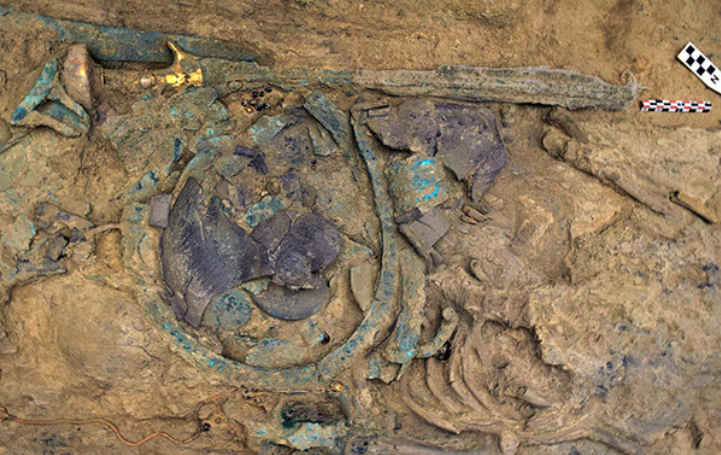
Grave finds of Griffin Warrior Tomb (image copyright by the Department of Classics of the University of Cincinnati)
Project co-directors Sharon R. Stocker and Jack L. Davis of the University of Cincinnati note: “The team did not discover the grave of the legendary King Nestor, who headed a contingent in the Greek forces at Troy. Nor did it find the grave of his father, Neleus. They found something perhaps of even greater importance: the tomb of one of the powerful men who laid foundations for the Mycenaean civilization, the earliest in Europe.”
This is pretty exciting!
More research and analysis of the finds is, of course, already underway. The exciting thing is that it is thought that more will be discovered about the relationship between the Mycenaean mainland and Minoan Crete.
I’m only summarizing things here. There is a lot more to read about this excavation and the finds and I’ll provide some links at the end of the blog.
Before I do, however, I wanted to touch on the one find that has truly captured the imagination of many around the world, especially my own…
The Pylos Combat Agate.
Here it is:
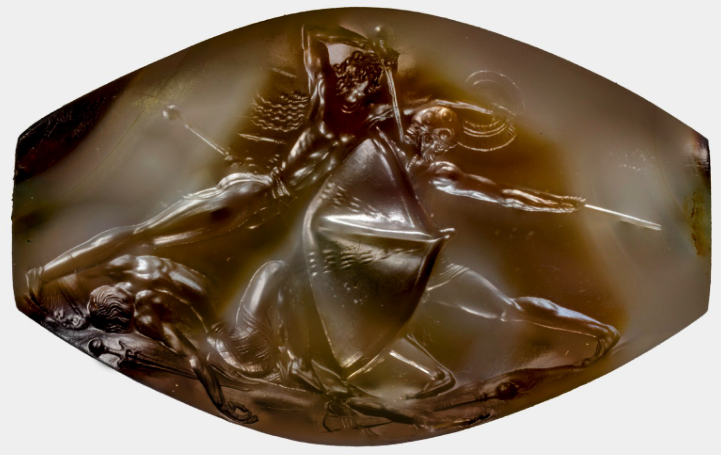
Image of the Pylos Combat Agate (image copyright by the Department of Classics of the University of Cincinnati)
Isn’t it stunning? Of all the wonderful finds in the Griffin Warrior Tomb, this is the one that pulls me in.
What is it?
At this point, it’s thought to be a Minoan seal that was created around c. 1450 B.C.
It’s named for the fierce combat that it portrays, and is now considered the best work of glyptic art (a symbolic figure carved or incised in relief) ever from the Aegean Bronze Age. In fact, such quality, skilled work in this style was not seen until the Classical Age about a thousand years later!
Who made this gem, and what is the scene being portrayed? Now that’s story to consider!
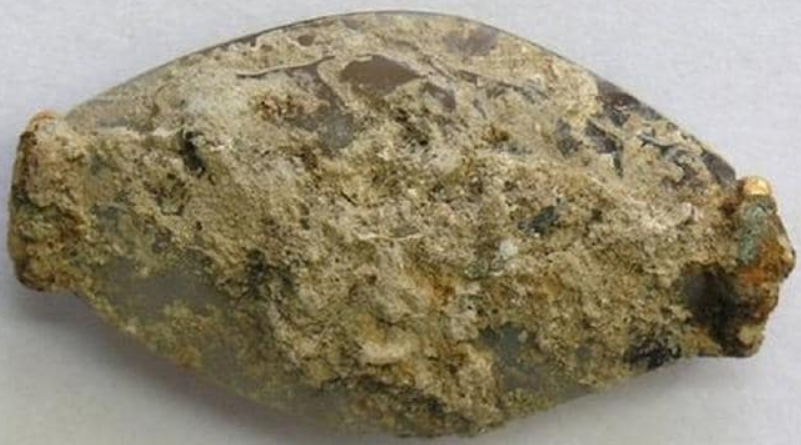
Pylos Combat Agate before restoration (image copyright by the Department of Classics of the University of Cincinnati)
This magnificent artifact is made of agate and is about 3.4 centimeters (1.3 inches) wide. In the Griffin Warrior Tomb, it was found along with four other signet rings with other engravings such as Minoan bulls.
It is believed that this was obtained from Minoan Crete by Mycenaeans, either by import or theft.
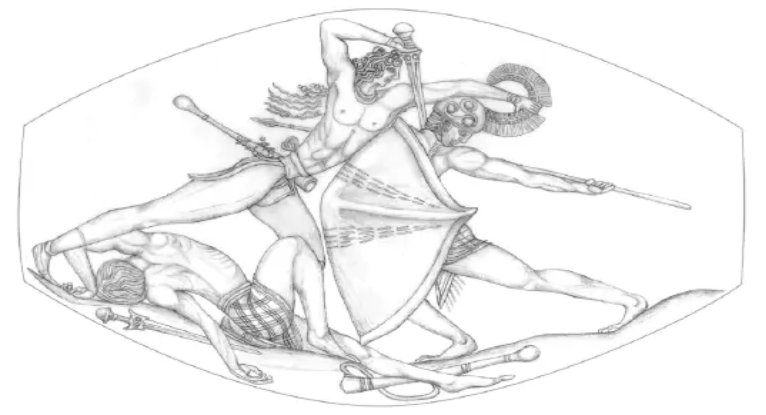
Artist Sketch of the Pylos Combat Agate Scene (image copyright by the Department of Classics of the University of Cincinnati)
Science, archaeology, and history aside…how does this scene make you feel?
The scene depicted is of a vicious battle with an unarmoured, long-haired warrior engaged in a brutal combat with a heavily armoured warrior. The former stands upon the body of a man he has already slain.
We don’t know anything else about this artifact, and we probably never will. But the possibilities are thrilling, aren’t they?
That’s one thing I love about archaeology – the potential for stories.
Every one of the artifacts found in the Griffin Warrior Tomb has a story behind it – how it was made and why, by whom? How did the artifacts come to be in the possession of this wealthy warrior and what meaning did they hold for him?
You can go on and on. Truly, there’s an entire book series to be written about this one man!
I was so inspired last year by the discovery of this artifact that I wrote an ‘Inspired by the Past’ short story about it which is available to all Centurion-level supporters on the Eagles and Dragons Publishing Patreon page.
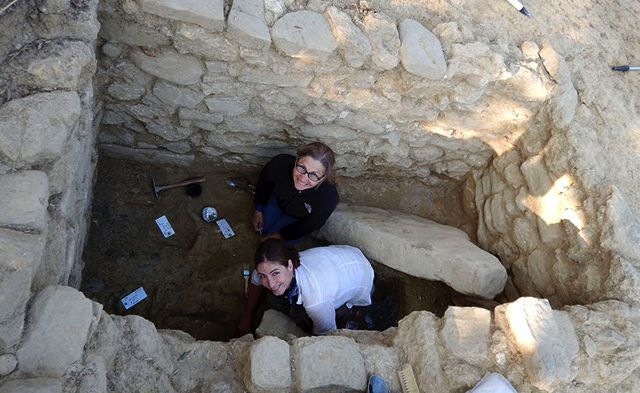
Jonida Martini and Sharon Stocker excavating the upper layer of artifacts immediately after bronze was discovered. (image copyright by the Department of Classics of the University of Cincinnati)
I’ve only scratched the surface of the history and finds related to the Griffin Warrior Tomb at Pylos, but I hope you’ve found it interesting and that it has inspired you to discover more.
To find out more about the archaeological team, the project and finds, I highly recommend visiting the website set up for the project at: http://www.griffinwarrior.org/griffinwarrior-burial.html
You can also watch the interviews on Greek media with the lead archaeologists on the project, Jack L. Davis and Sharon Stocker. Their excitement and enthusiasm for the finds is contagious and inspiring! Check out the video below (and cue the dramatic Greek news show music!)
Thank you for reading!

